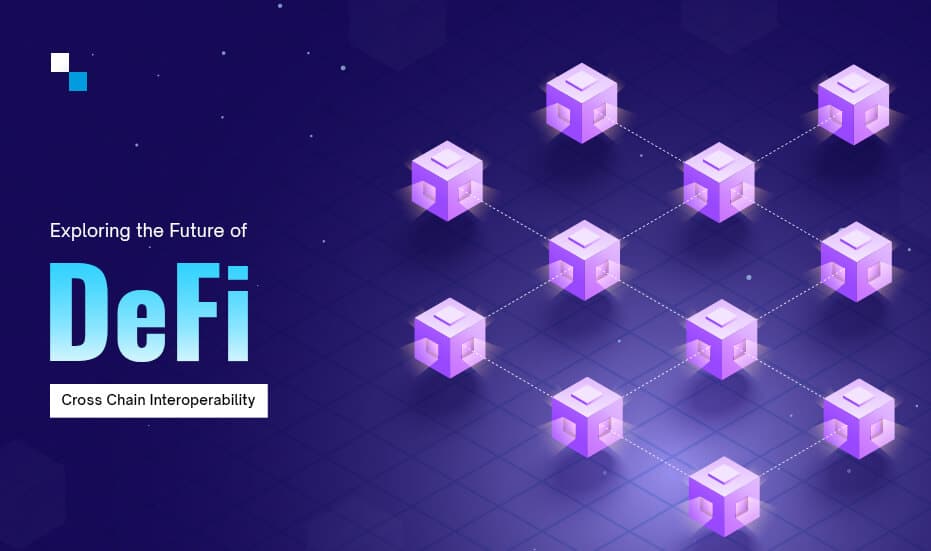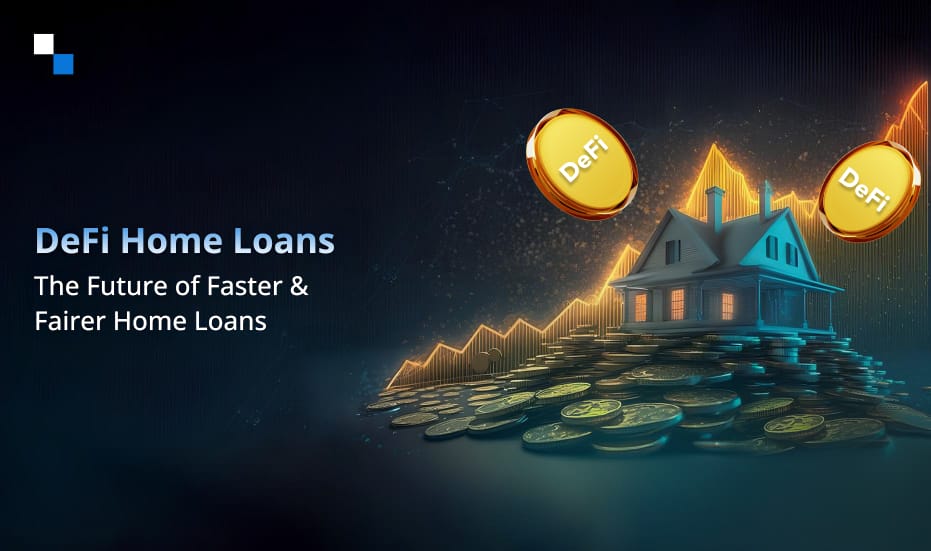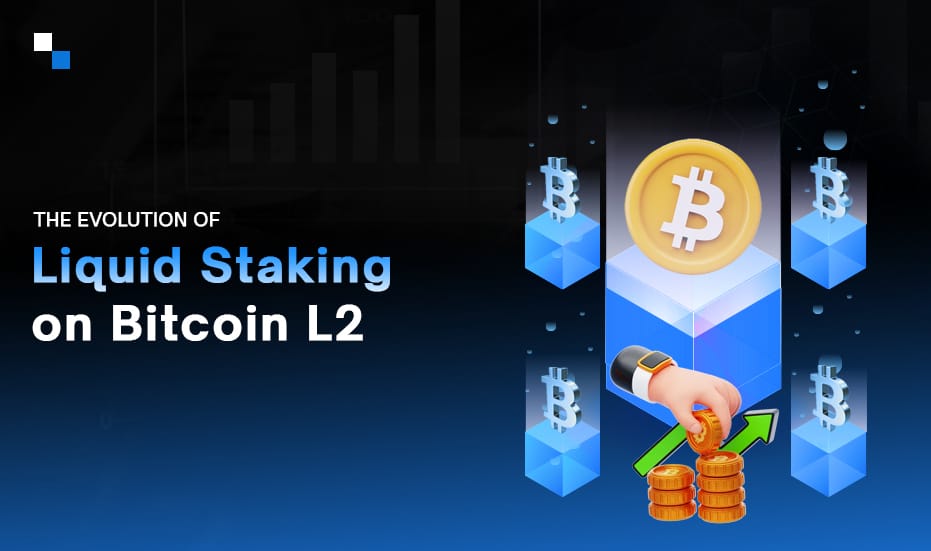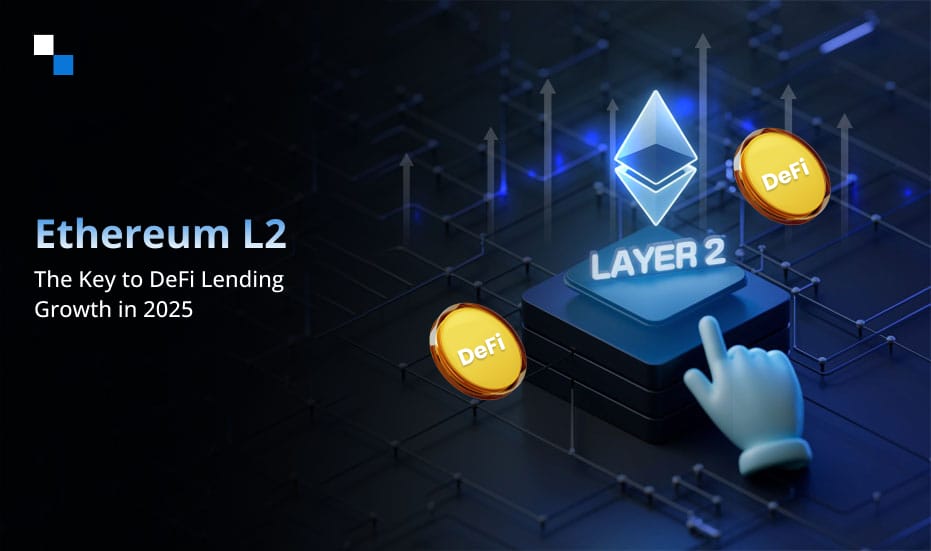
Launching a DeFi Exchange Solution Inspired by IDEX
June 26, 2023
From Skies to Metaverse: How Aerospace Companies Embrace Virtual Worlds
June 28, 2023Decentralized finance development has rapidly emerged as a transformative force in the world of finance, revolutionizing traditional systems by leveraging the power of blockchain technology.
However, as the DeFi ecosystem grows, so do the challenges it faces, including limitations imposed by the fragmentation of blockchain networks. Cross-chain interoperability presents an innovative solution that holds immense potential for the future of DeFi. This article explores the concept of cross-chain interoperability, its significance, and how it shapes the future landscape of decentralized finance.
Unveiling the Challenges: Layer-1 Blockchain’s Exclusivity in DeFi
The unique characteristics of Layer-1 blockchains have created significant hurdles for DeFi protocols aspiring to extend their services across multiple networks. Several factors contribute to these challenges, including:
Incompatibility of Prominent Blockchain’s Native Assets: The native assets of popular blockchains, such as Bitcoin’s BTC, Ripple’s XRP, and Polkadot’s DOT, lack compatibility with Ethereum, the most widely adopted DeFi ecosystem. This incompatibility hampers the seamless transfer and utilization of assets between these networks, limiting the potential for cross-chain interactions and hindering the advancement of decentralized finance.
Escaping the Burden of High Fees: Ethereum, renowned for its thriving DeFi ecosystem, has encountered scalability issues and skyrocketing fees during periods of high demand. As a result, users have sought refuge in alternative DeFi ecosystems that can better handle such surges. However, the lack of interoperability between these ecosystems prevents users from smoothly migrating their assets and operations, impeding their ability to escape the burden of exorbitant fees and hindering their overall DeFi experience.
Maximizing Yield Opportunities Across Ecosystems: DeFi enthusiasts aiming to maximize their yield opportunities seek to leverage various platforms available across different ecosystems. Rather than confining themselves to a single network, they aspire to exploit the unique features and offerings of diverse DeFi protocols. However, the absence of DeFi Cross Chain Technologies inhibits their ability to seamlessly navigate and capitalize on the full potential of multiple ecosystems, limiting their ability to optimize returns and diversify their investment strategies.
Understanding Cross-Chain Interoperability
Cross-chain interoperability refers to the ability of different blockchain networks to share data, assets, and functionalities securely and seamlessly. DeFi Cross Chain Solutions eliminate the siloed nature of blockchains, enabling them to communicate and collaborate effectively. By enabling cross-chain interoperability and leveraging DeFi bridges users can experience enhanced flexibility, scalability, and increased possibilities for decentralized applications (DApps) and smart contracts.
Significance of Cross-chain Interoperability
Cross-chain interoperability breaks down the barriers between blockchain networks, it enables a more open, inclusive, and efficient financial infrastructure that benefits both users and developers in the DeFi space. It is of significant importance for decentralized finance (DeFi) for reasons mentioned below:
Expanded Market Access
DeFi applications and protocols often operate on specific blockchain networks such as Ethereum. However, the cryptocurrency ecosystem is rapidly expanding, and there are numerous other blockchain networks with unique features and capabilities. DeFi cross chain solutions allow DeFi applications to extend their reach beyond a single blockchain network, enabling access to a broader user base and expanding the potential market for liquidity, lending, borrowing, and other financial services.
Asset Portability
Different blockchain networks support various digital assets, such as cryptocurrencies and tokens, which may have different functionalities or purposes. Cross-chain interoperability enables the seamless transfer of assets across different blockchains, allowing users to leverage their assets on one chain while accessing DeFi services on another. DeFi cross chain solutions enhance liquidity options, facilitate efficient capital allocation, and enable users to take advantage of diverse investment opportunities across multiple chains.
Risk Mitigation
By enabling cross-chain interoperability, DeFi platforms can mitigate risks associated with relying solely on a single blockchain network. Blockchain networks can experience congestion, high fees, scalability limitations, or security vulnerabilities. If a DeFi application is built exclusively on such a network, it becomes highly dependent on its performance and security. Cross-chain interoperability allows DeFi platforms to distribute risk by leveraging multiple blockchains, thereby reducing the impact of any single network’s shortcomings.
Enhanced Innovation
Different blockchain networks often have distinct features, such as smart contract functionality, consensus mechanisms, scalability solutions, or privacy protocols. Cross-chain interoperability encourages innovation by allowing developers to combine the strengths of various blockchains and integrate different technologies. This promotes the creation of novel DeFi applications that can leverage the unique features of multiple chains, fostering experimentation, and driving the advancement of the overall DeFi ecosystem.
Liquidity Aggregation
Liquidity is crucial for DeFi protocols as it ensures efficient trading, lending, and borrowing. DeFi cross chain solutions enable liquidity aggregation by connecting fragmented liquidity pools across multiple blockchain networks. By combining liquidity from various chains, DeFi platforms can offer better trading experiences, tighter spreads, and improved market depth, thereby enhancing overall liquidity provision for users.
Interconnected Ecosystem
Cross-chain interoperability fosters a more interconnected DeFi ecosystem, where different protocols, applications, and chains can seamlessly interact and collaborate. This interoperability facilitates the composability of DeFi applications, allowing developers to combine and integrate various protocols to create more sophisticated and powerful financial products. It promotes synergies, interoperable standards, and cooperation among different projects, driving the growth and maturation of the DeFi industry as a whole.

Prominent Approaches to Achieve Cross-Chain DeFi Interoperability
Achieving cross-chain DeFi interoperability requires the implementation of various approaches and mechanisms. Here are some of the most prominent ones:
Cross-Chain Bridges: Cross-chain bridges act as connectors between different blockchain networks, enabling the transfer of assets and data. They are a type of DeFi cross chain solutions that utilize smart contracts, oracles, and cryptographic techniques to facilitate secure and trustless cross-chain transactions. Examples include RenVM and Chainlink’s Interoperability Protocol.
Interoperability Protocols: Interoperability protocols establish standards and rules for different blockchain networks to communicate and interact. They provide a common framework for cross-chain transactions. Prominent protocols include the Inter-Blockchain Communication (IBC) protocol for the Cosmos ecosystem and Polkadot’s Substrate framework.
Sidechains and Relay Chains: Sidechains and relay chains offer additional blockchain networks that connect to a main blockchain (mainnet). Sidechains enable the transfer of assets and data between the main chain and side chains, promoting interoperability. Relay chains serve as bridges that facilitate communication between different chains. Notable projects include Ethereum 2.0’s Beacon Chain and the Cosmos Network.
Atomic Swaps: Atomic swaps enable peer-to-peer asset exchanges directly between parties on different blockchain networks. They utilize smart contracts and hashed time-locked contracts (HTLCs) to ensure the atomicity and security of the swap. Atomic swaps eliminate the need for intermediaries and centralized exchanges, promoting decentralized cross-chain interoperability.
Token Standards and Wrapping: Token standards such as ERC-20 (Ethereum), BEP-20 (Binance Smart Chain), and SPL (Solana) allow tokens to be created, transferred, and recognized across multiple chains that support the same standard. Token wrapping involves creating wrapped versions of tokens from one chain to represent their equivalent value on another chain, enabling seamless transfers and interactions.
Cross-Chain Oracles: Cross-chain oracles retrieve and validate data from different chains, making it available to smart contracts or applications on other chains. They facilitate secure and reliable data transfers, which are essential for cross-chain DeFi interoperability. Chainlink is a well-known provider of cross-chain oracle solutions.
Standardized APIs and Middleware: Standardized APIs and middleware layers provide a unified interface for developers to access and utilize various blockchain networks’ functionalities. These APIs and middleware abstract away the complexities of different chains, making it easier to build cross-chain applications and services. Projects like The Graph provide APIs for accessing blockchain data across multiple networks.
By leveraging these approaches and mechanisms, blockchain developers and protocols are continuously working towards achieving seamless cross-chain DeFi interoperability, enabling the free flow of assets, data, and functionality across different blockchain networks.
Use Cases of Cross Chain Interoperability
Cross chain interoperability has a wide range of use cases, including:
Multi-asset DeFi Wallets
With cross-chain interoperability, DeFi users can benefit from multi-asset wallets that seamlessly manage a diverse range of assets across different blockchain networks. These wallets provide a unified interface for users to monitor, send, receive, and interact with various cryptocurrencies and tokens. By offering a consolidated view of their assets, users gain better control and convenience in managing their DeFi portfolios. Examples include MetaMask and Trust Wallet, which allow users to manage a variety of assets across different blockchains from a single wallet interface.
Cross-Chain Liquidity Pools
DeFi projects can leverage cross-chain interoperability to create liquidity pools that span multiple blockchain networks. These pools become the backbone of decentralized exchange (DEX) services, enabling users to directly swap assets between different chains without relying on centralized intermediaries. This integration of liquidity enhances flexibility and access to assets, fostering a more liquid and efficient DeFi ecosystem. Projects like Thorchain (RUNE) and Kava (KAVA) enable liquidity pools that facilitate direct asset swaps across multiple blockchains.
Cross-Chain Decentralized Exchanges (Dexs)
Going beyond cross-chain liquidity pools, full-fledged cross-chain DEXs can be developed. These exchanges enable users to trade assets across different blockchains without the need for intermediaries. They offer a decentralized and trustless environment for asset trading, granting users a broader spectrum of options and facilitating increased liquidity in the DeFi market. Notable cross-chain DEXs include SushiSwap (SUSHI), which operates on both Ethereum and Binance Smart Chain, and Polkadot’s Moonbeam DEX.
Cross-Chain Asset Management Platforms
Asset management platforms within the DeFi space can harness cross-chain interoperability to provide sophisticated services, including portfolio management, yield optimization, and automated asset allocation across various blockchain networks. Users can enjoy automated strategies that allocate their assets to the most promising opportunities on different chains, all from a single platform. Yearn Finance (YFI) offers yield optimization strategies that span multiple blockchains, helping users maximize their returns.
Cross-Chain NFT Marketplaces
Non-fungible tokens (NFTs) have captured the imagination of the crypto world but exist on different blockchains with unique NFT standards. Cross-chain NFT marketplaces emerge as a solution, offering a unified space for trading and showcasing NFTs from various chains. This consolidation enhances the exposure and value of NFTs, making it easier for collectors and creators to engage with a broader audience. OpenSea aims to provide a unified marketplace for NFTs, making it easier for users to explore and trade NFTs from various blockchains.
Cross-Chain Stablecoins
Stablecoins serve as the foundation of DeFi, providing stability and versatility in transactions and investments. Cross-chain interoperability can lead to the development of stablecoins backed by assets on multiple blockchain networks. These cross-chain stablecoins offer users the confidence and flexibility to engage in DeFi activities across various ecosystems. Terra (LUNA) is an example of a stablecoin project that spans multiple blockchains, ensuring stability across various ecosystems.
Cross-Chain Lending and Borrowing Platforms
DeFi lending and borrowing platforms can expand their reach by operating across multiple chains. Users can borrow assets from one blockchain and lend them on another, capitalizing on varying interest rates and collateral options available on different chains. This cross-chain lending model promotes greater efficiency in the DeFi lending market. Aave (AAVE) has expanded its lending and borrowing services across multiple blockchains, including Ethereum, Polygon, and others.
Cross-Chain Yield Farming and Staking
Yield farming and staking have become popular DeFi activities, and cross-chain interoperability allows these platforms to aggregate opportunities from different chains. Users can maximize their returns by participating in liquidity provision and staking activities across various DeFi ecosystems, optimizing their investment strategies. PancakeSwap (CAKE) allows users to stake and farm CAKE tokens on both Binance Smart Chain and Ethereum.
Cross-Chain Governance and Voting
Decentralized autonomous organizations (DAOs) and governance platforms gain from cross-chain interoperability. Token holders on different chains can actively participate in governance decisions, vote on proposals, and influence the direction of projects that span multiple blockchains. This promotes a more inclusive and diverse governance model. The Decentralized Autonomous Organization (DAO) MakerDAO has considered implementing cross-chain governance to allow token holders to vote on proposals across multiple chains.
Cross-Chain Insurance Platforms
Insurance protocols can extend their coverage by utilizing cross-chain interoperability. Users can purchase insurance policies that protect their assets on multiple chains, ensuring their holdings are safeguarded against unforeseen events. This cross-chain insurance model enhances the security and resilience of DeFi ecosystems. Nexus Mutual offers insurance coverage that spans various DeFi protocols and blockchains, ensuring users are protected against smart contract vulnerabilities.
Cross-Chain Data Oracles
Cross-chain data oracles play a pivotal role in DeFi by fetching and verifying data from various blockchain networks. These oracles make data available to smart contracts and applications on different chains, ensuring that DeFi applications have access to accurate and reliable data from multiple sources. This is essential for the proper functioning of DeFi protocols. Chainlink (LINK) is a prime example, providing decentralized oracles that fetch and verify data across multiple blockchains.
Cross-Chain Identity and Authentication
Identity and authentication solutions can be developed to work across multiple blockchains. Users can have a unified digital identity that they can use for access and verification on various DeFi platforms and services. It simplifies user interactions and ensures a consistent and secure identity management system. SelfKey (KEY) is working on a cross-chain identity management solution that enables users to maintain a unified digital identity across various platforms.
Cross-Chain Gaming and Virtual Worlds
Gaming and virtual world platforms can leverage cross-chain interoperability to enable asset interoperability. It allows users to move in-game assets and tokens across different gaming ecosystems and virtual worlds, fostering a vibrant and interconnected virtual economy. Gamers can enjoy more flexibility and autonomy in managing their virtual assets. The Enjin (ENJ) platform allows users to create and trade in-game assets (NFTs) across multiple games and virtual worlds.
Cross-Chain Supply Chain Tracking
Supply chain tracking solutions can use cross-chain interoperability to ensure transparency and traceability of products as they move across multiple chains. The innovation enhances trust and efficiency in supply chain management by providing a comprehensive and immutable record of product movements. VeChain (VET) is a blockchain platform that offers supply chain tracking solutions on multiple blockchains, enhancing transparency in logistics and product tracking.
Cross-chain IoT integration
Internet of Things (IoT) devices and sensors can securely share data and execute transactions across multiple blockchain networks, thanks to cross-chain interoperability. The integration enables new use cases and business models in industries like logistics, manufacturing, and agriculture. IoT data becomes more accessible and valuable across diverse blockchain ecosystems, improving operational efficiency and data management. Projects like IOTA (MIOTA) aim to integrate IoT devices with various blockchains to enable secure data sharing and transactions, facilitating new use cases in industries like supply chain management and healthcare.
These diverse use cases of DeFi cross-chain interoperability illustrate the transformative potential of blockchain technology in revolutionizing various sectors and enhancing the capabilities of DeFi ecosystems.
Final Words
DeFi cross-chain interoperability holds immense importance for the bright future of decentralized finance. By enabling seamless connectivity and asset transfers between different blockchain networks, it provides multitude opportunities.
Looking for the best DeFi Platform Development company that works on DeFi Cross Chain Technologies? Your search ends at Antier, the best DeFi platform company that leverages cutting-edge technologies to provide the latest solutions. Get in touch today!



